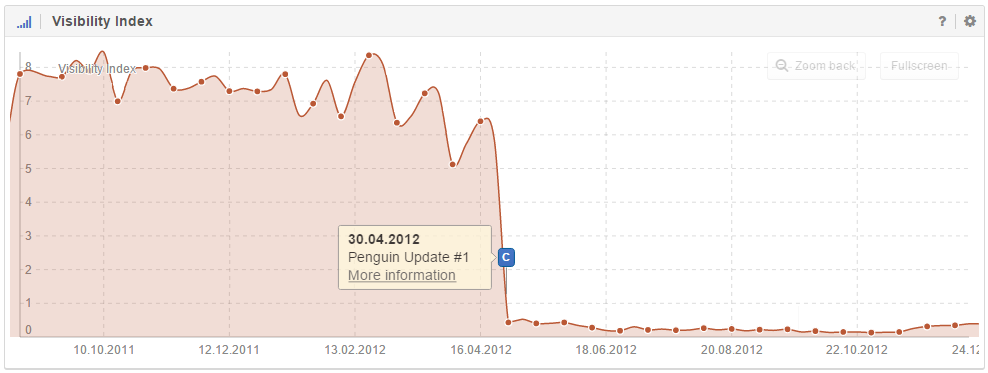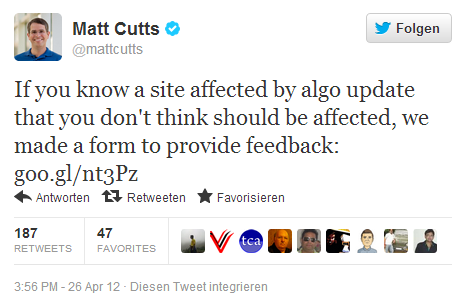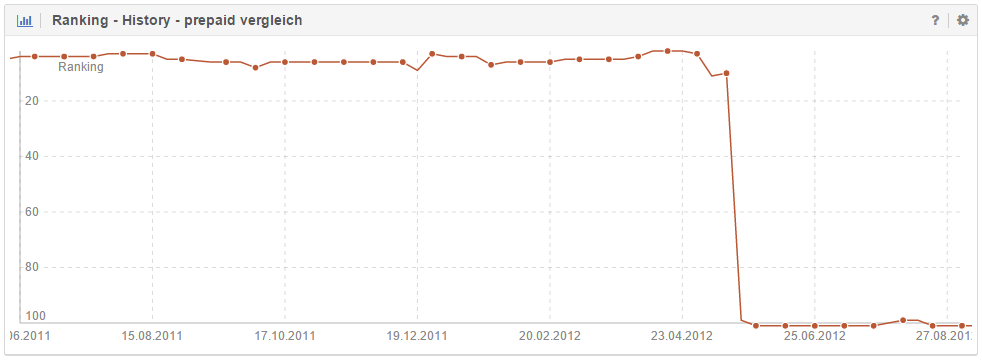The goal of the Penguin Update (April 2012) was to increase quality in the search results,
- What is the Google Penguin Update?
- What does Google consider to be webspam?
- How do you know that a website was hit by the Penguin Update?
- Which Goal is the Penguin Update supposed to achieve?
- The Penguin Update in Google's own words
- What to do if your website is affected?
- Wrongfully accused?
- Additional information from Google on the Penguin Update
What is the Google Penguin Update?
The April 2012 Google Penguin Update was deployed to reduce webspam, this time in a more radical way. It is often known as the Webspam Update.. The algorithm change was deployed on April 24, 2012, for all languages worldwide and achieved a noticeable effect.
According to Google, the impact on the search results depended on the country and language of the searchindex. The Penguin Update affected about 3.1% of all English language search requests and German, Chinese and Arabian search requests were affected by about 3%. Some countries have more of a problem with webspam than others, which is why, for the polish searchmarket, for example, 5% of all search queries were affected.
What does Google consider to be webspam?
Google classifies “Webspam” as techniques used by website operators that have the goal of achieving a high position in the search results. Considering that these techniques only have the above goal and do not add any value to users, Google believes that these websites do not deserve the top search spots.
Google forbids the use of webspam techniques such as keyword stuffing, link schemes, or cloaking in their Webmaster Guidelines.
Penguin therefore punishes websites that go against Google’s Webmaster Guidelines.
How do you know that a website was hit by the Penguin Update?
If you see a website that has lost a lot of Visibility between April 23 and April 30, 2012, it is highly likely that the website was punished by the Penguin Update. Another indication that a domain felt the algorithm-update is that the website shows a continuous downward trend in their Visibility, for weeks or month, going towards 0.

This loss in Visibility comes about by the loss of all the top rankings for the domain.
Which Goal is the Penguin Update supposed to achieve?
The Penguin Update is another step towards quality, or rather more quality, in the search results as well as during the websites (and content) creation phase.
This algorithm update will punishes websites that do not follow the technical/qualitative specifications of the Google Webmaster Guidelines.
The Penguin Update in Google’s own words
Sites affected by this change might not be easily recognizable as spamming without deep analysis or expertise, but the common thread is that these sites are doing much more than white hat SEO; we believe they are engaging in webspam tactics to manipulate search engine rankings.
We want people doing white hat search engine optimization (or even no search engine optimization at all) to be free to focus on creating amazing, compelling web sites. As always, we’ll keep our ears open for feedback on ways to iterate and improve our ranking algorithms toward that goal.
– Matt Cutts, Distinguished Engineer
What to do if your website is affected?
Get to know the Google Webmaster Guidelines more deeply. Then, check your project with this new knowledge and, if necessary, change it accordingly.
Also, focus on creating high quality websites and content.
Wrongfully accused?
If you think that a/your website has been wrongly affected and marked as “webspam” by the Penguin Update, you can appeal the decision by using this form supplied by Google:

